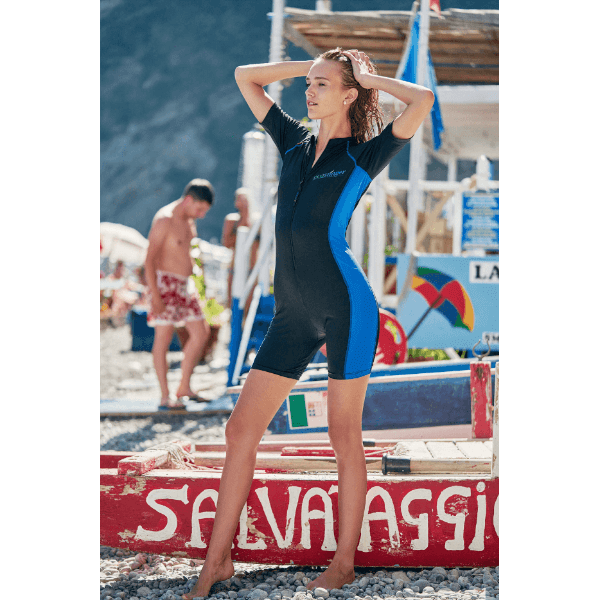What Is The Difference Between Regular And Sun Protection Swimwear UPF50+?
1. Fabric Type: Regular and sun-protection swimwear are typically made from specialized stretch fabrics designed for use in water. These fabrics are commonly composed of Nylon, Lycra, Elastane, Spandex, or Polyester yarns. The quality and performance of the garment depend on both the fabric composition—such as Nylon/Lycra or Polyester/PBT blends—and the fabric weight, which usually ranges from 170 to 200 grams per square meter (5 to 5.9 oz per square yard).
To achieve UV protection, the fabric must be tightly knitted to effectively block the sun’s ultraviolet rays from penetrating and reaching the skin. As a result, some regular swimwear fabrics may not provide adequate sun protection. The highest possible UV protection rating a fabric can achieve is UPF50+, which blocks more than 97.5% of the sun’s UV radiation according to Australian Radiation Protection and Nuclear Safety Agency (ARPANSA).
UPF50 means that only 1/50th (or 2%) of UV radiation can penetrate the fabric. In other words, the fabric blocks 98% of the sun’s UV rays, that is the maximum any fabric can be certified for, therefore claiming 100% sun protection for clothing, swimwear or sun hats is an incorrect statement.
2. Design Style: The design differences between regular and sun-protection swimwear are quite distinct. Regular swimwear often follows fashion trends and personal style preferences, typically exposing more skin for aesthetic appeal. In contrast, sun-protection swimwear is purposefully designed to cover as much skin as possible, providing effective defense against harmful UV radiation.
Garments such as stinger suits, dive skins, and full-body swimsuits are specifically engineered to cover the arms and legs, ensuring all-day protection from the sun’s harsh rays. This coverage helps prevent sunburn, skin damage, and in severe cases, skin cancer, allowing wearers to enjoy the water safely and confidently.
3. Body Fit: UV-protection swimsuits are designed with a snug, body-hugging fit that enhances performance and ensures optimal UV coverage. Because this fit is similar to slim-fit sizing, it is generally recommended to choose one size larger than your regular swimwear or clothing size for maximum comfort.













